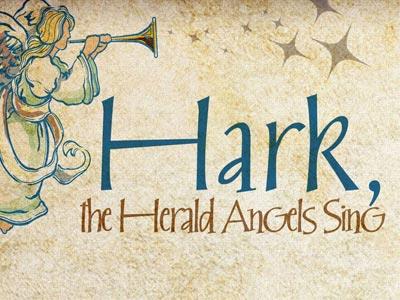-
Sermon On The Bridges Of Hope
Contributed by William Meakin on Nov 4, 2024 (message contributor)
Summary: The Aurora Borealis, commonly known as the Northern Lights, is defined by Wikipedia as a natural light display in the Earth’s sky, predominantly seen in high-latitude regions in the vicinity of the Arctic and Antarctic.
Sir Philip Nicholas Outram Pullman, an English writer once remarked: “The Aurora!"
Her wonder was so strong that she had to clutch the rail to keep from falling.
The sight filled the northern sky; the immensity of it was scarcely conceivable. As if from Heaven itself, great curtains of delicate light hung and trembled. Pale green and rose-pink, and as transparent as the most fragile fabric, and at the bottom edge a profound and fiery crimson like the fires of Hell, they swung and shimmered loosely with more grace than the most skillful dancer.
Lyra thought she could even hear them: a vast distant whispering swish. In the evanescent delicacy she felt something as profound as she'd felt close to the bear. She was moved by it: it was so beautiful it was almost holy; she felt tears prick her eyes, and the tears splintered the light even further into prismatic rainbows.” Genesis 1:14 reminds us: And God said, “Let there be lights in the expanse of the heavens to separate the day from the night. And let them be for signs and for seasons, and for days and years.”
The Aurora Borealis, commonly known as the Northern Lights, is defined by Wikipedia as a natural light display in the earth’s sky, predominantly seen in high-latitude regions in the vicinity of the Arctic and Antarctic. Auroras display dynamic patterns of brilliant lights that appear as curtains, rays, spirals, or dynamic flickers covering the entire sky. They are often considered a symbol of hope and renewal. The lights are often a mixture of several colors including green, purple and red. They result from the interaction between the earth’s magnetic field and charged particles from the sun.
The lights are believed by some indigenous cultures to have spiritual connections to deceased relatives or ancestors. In Norse mythology, they are considered the bridge between the mortal world and the divine, and the linked pathway for gods to travel between the two. Psalm 3:1-8 reminds us: “O Lord, how many are my foes! Many are rising against me; many are saying of my soul, “There is no salvation for him in God.” Selah
But you, O Lord, are a shield about me, my glory, and the lifter of my head. I cried aloud to the Lord, and he answered me from his holy hill. Selah I lay down and slept; I woke again, for the Lord sustained me. I will not be afraid of many thousands of people who have set themselves against me all around. Arise, O Lord! Save me, O my God! For you strike all my enemies on the cheek; you break the teeth of the wicked. Salvation belongs to the Lord; your blessing be on your people! Selah.”
A bridge is regarded as a structure carrying a road, path, railway etc; that connects two individual components across an open space or void. It is the amalgamation of two separate entities. It is sometimes considered on a spiritual basis to be the link and bond between mankind and God, through the death and resurrection of Jesus Christ. Job 12:7-10 reminds us: “But ask the beasts, and they will teach you; the birds of the heavens, and they will tell you; or the bushes of the earth, and they will teach you; and the fish of the sea will declare to you. Who among all these does not know that the hand of the Lord has done this? In his hand is the life of every living thing and the breath of all mankind.”
Whether bridges are regarded as individual structural assemblies designed for convectional purposes linking two separate components, or in the spiritual sense to aid unity between mankind and God, both are important and essential aspects of life. On a national level, bridges can improve the economy such as in the case of the Brooklyn Bridge, which transformed Brooklyn into a thriving borough of New York City. On a personal level, they can aid well-being and the overall quality of life by creating individual links to God, which may otherwise be missing, or a positive connection between family and friends which would otherwise remain indistinct or separate. John 14:6 confirms: Jesus said to him, “I am the way, and the truth, and the life. No one comes to the Father except through me.”
In both life and art, bridges can represent a symbol of hope and peace. In life, they have been used as metaphors for strength and understanding. Most bridges are considered safe places to cross dangerous obstacles such as fast-flowing rivers, or deep rocky ravines. It provides firm support where none would otherwise exist in its absence. It conveys the understanding that if the bridge exists, it must be connected to something on the other side. This feasibility can be related to the hope of God which provides a safe passage to all in life in he most adverse of circumstances. In the form of artwork they can represent new beginnings and transitions which reflect an element of optimism and peace. The colors and shadows that are created can reflect their own tranquility. Tommy Barnett, an American author and pastor once remarked: “If you want to be a bridge of hope to the world, you've got to allow yourself to be walked on.”

 Sermon Central
Sermon Central



